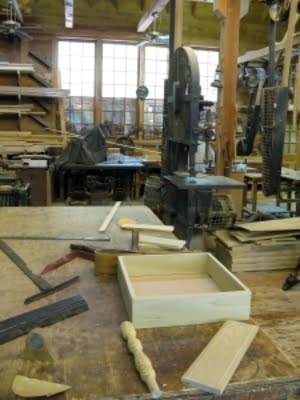As a woodworker, your latest project is always your baby. You spend hours nurturing its needs and shaping its future. You coddle it and invest whatever money is necessary. Nothing is too good for your baby.
So are you one of those people who think it doesn’t matter what woodworking clamps you use for your latest project? The first time you hear a crunch or the first time you lift up the clamp and see a huge gouge in your expensive wood, you might change your mind. Mike Best of Best Baby Furniture Plans gives these tips for choosing and using the best woodworking clamps.
First, when you are undertaking any woodworking project, the importance of having woodworking clamps on hand cannot be overstressed. Woodworking clamps give you an extra pair of hands. You can hold materials together for gluing or stabilize delicate parts while you make finishing touches. Each woodworking clamp has its own benefits and problems, but reading through all of the tips below will help you avoid common mistakes.
Woodworking Clamps: C-Clamp
You probably see C-clamps all of the time and think that they are a stable of any woodworker’s toolbox. I want to share a secret with you….
Most woodworkers do not use C-clamps any more.
It is a common home improvement clamp, but it is not a popular woodworking clamp. Why not? The clamping force is concentrated on two small points, so it can easily damage your wood. When you do need to use C-clamps, many woodworkers will add scrap pieces of wood so that the scraps sandwich the wood being glued/held together. The clamp holds the scraps, the scraps hold the wood, and nothing important is damaged.
Operating a C-clamp is relatively easy. One end of the C has a flat end that is pressed against one side of the wood. The other end (on the screw side of the C) has a turn-screw that flattens against the opposite side of the wood. Because C-clamps are generally made of steel or cast iron, they provide a more heavy-duty woodworking solution. As mentioned earlier, remember that the flat edges of the frame can indent or mar the woodworking surface, especially on delicate woods. You must maintain a balance between tight enough to hold the materials together and not so tight that the wood is damaged.
Woodworking Clamps: Hand-Screw Clamp
Another routine choice for woodworking clamps is hand-screw clamps. These clamps are definitely popular with woodworkers and a must-have for anyone who wants professional clamping strength with little project damage. Because their design distributes pressure across a wider area, hand-screw clamps are less likely than C-clamps to damage the wood being held together. They are a good choice when working with woods, plastics, and fabrics, and they come in a variety of lengths and reaches. Always be sure to select the hand-screw clamp (and any woodworking clamp) that can open wide enough for your project and has a jaw depth that can accommodate your project.
Woodworking Clamps: Pistol-Grip Bar Clamp (aka Quick Release Clamps)
Don’t be fooled into thinking that one hand-screw clamp can solve all of your problems. I know you have seen the next type of woodworking clamp, and it also makes an excellent addition to your toolkit.
The third type of woodworking clamp is the pistol-grip bar clamp or quick release clamp. Bar clamps usually have a fixed end and a screw-down end. A variation is the quick grip clamp or quick release clamp that uses a pistol-style grip for rapid adjustment and clamping. One of the best benefits of a pistol-grip bar clamp is that the trigger action allows you to clamp your materials one-handed.
Because they often have plastic or rubber jaws, pistol-grip bar clamps are great for delicate projects in which the wood could be easily damaged. Keep in mind that the rubberized clamps provide greater padding when it comes to working with soft woods, but they also tend to have more slack than you may want. Woodworkers generally use the rubberized quick release clamps when alignment or force does not need to be perfect. If you are in need of additional pressure, go with the hand-screw clamps.
Additional Tips for Woodworking Clamps
As you accumulate woodworking clamps, you need to know how to use and maintain them. Here are four tips for your three clamps:
1. Select the correct type of woodworking clamp and the correct size of clamp for your project. Applying too much pressure with a small clamp will cause the clamp to break, and applying too much pressure with a large clamp on delicate wood will leave a nasty gouge in your materials.
2. Lightly lubricate the screws on your woodworking clamps occasionally to prevent rust.
3. If you will be clamping directly over a glue joint, put wax paper or plastic wrap between the woodworking clamp and the joint to avoid permanently gluing the clamp to the project.
4. Build hanging racks to keep your woodworking clamps organized, accessible, and in top condition.





